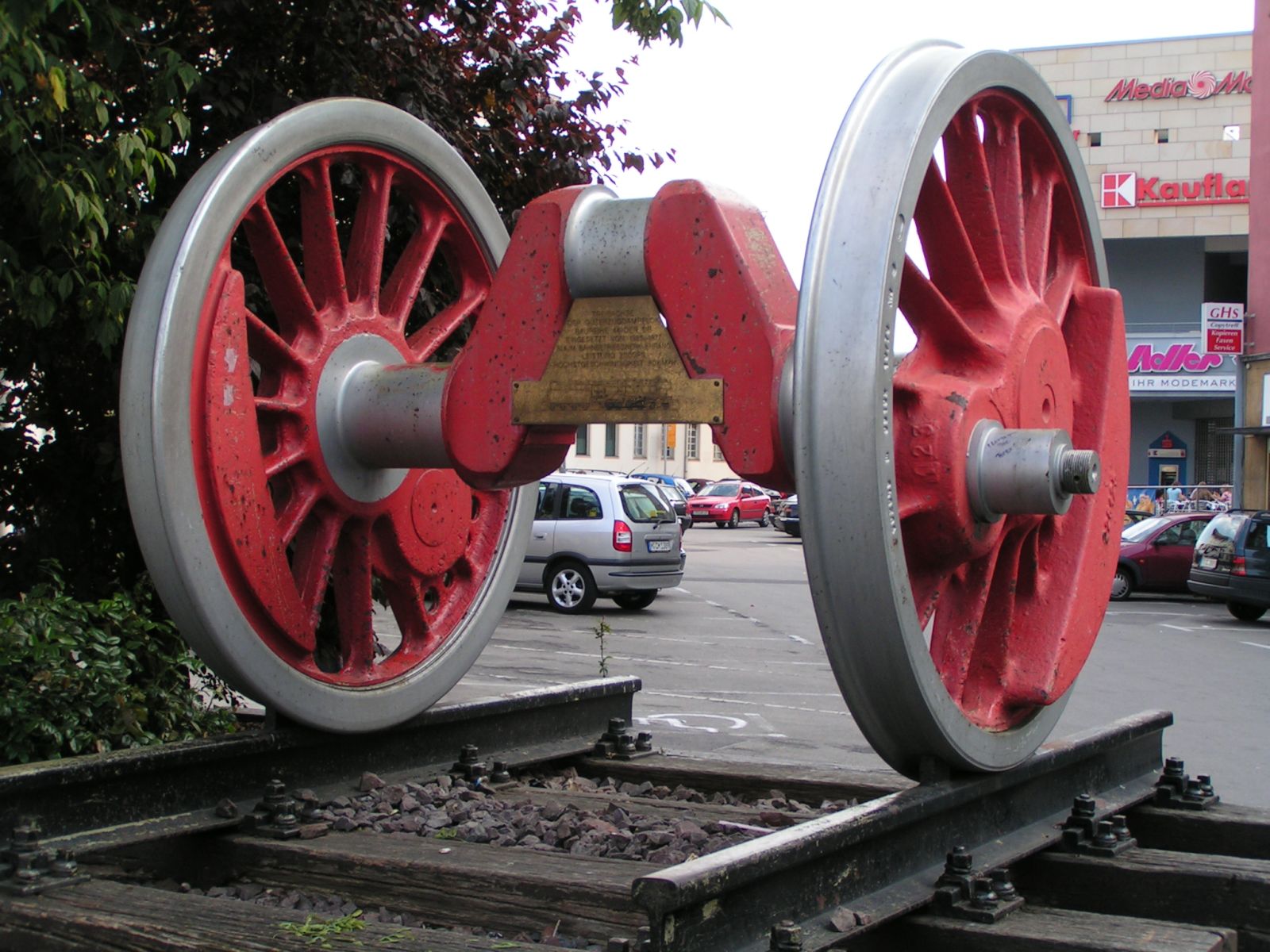Crank Pin on:
[Wikipedia]
[Google]
[Amazon]
A crankpin or crank pin, also known as a rod bearing journal, is a mechanical device in an engine which connects the
 Cylindrical crank pins were fitted onto the
Cylindrical crank pins were fitted onto the
crankshaft
A crankshaft is a mechanical component used in a piston engine to convert the reciprocating motion into rotational motion. The crankshaft is a rotating shaft containing one or more crankpins, that are driven by the pistons via the connecting ...
to the connecting rod
A connecting rod, also called a 'con rod', is the part of a piston engine which connects the piston to the crankshaft. Together with the crank, the connecting rod converts the reciprocating motion of the piston into the rotation of the cranksh ...
for each cylinder. It has a cylindrical surface, to allow the crankpin to rotate relative to the "big end" of the connecting rod.
The most common configuration is for a crankpin to serve one cylinder. However, many V engines have each crankpin shared by each pair of cylinders.
Design
The crankpin connects to the larger end of the connecting rod for each cylinder. This end of the connecting rod is called the "big end", as opposed to the "small end" or "little end" (which connects to the wrist/gudgeon pin in the piston). The bearing which allows the crankpin to rotate around its shaft is called the "rod bearing". In automotive engines, the most common type of rod bearing is the plain bearing, however bushings or roller bearings are also used in some engines.Configurations
In a single-cylinder engine,straight engine
The straight or inline engine is an internal combustion engine with all cylinders aligned in one row and having no offset. Usually found in four, six and eight cylinder configurations, they have been used in automobiles, locomotives and aircraft ...
or flat engine
A flat engine is a piston engine where the cylinders are located on either side of a central crankshaft. Flat engines are also known as horizontally opposed engines, however this is distinct from the less common opposed-piston engine design, ...
, each crankpin normally serves just one cylinder. This results for a relatively simple design which is the cheapest to produce. Some V-twin engines use a single cylinder per crankpin.
Most V engines have each pair of cylinders sharing a crankpin. This usually requires an offset between the cylinders in each bank, resulting in a simple connecting rod design. If a cylinder offset is not used, then the connecting rods must be articulated or forked at the big end. Forked connecting rods are mainly used in V-twin motorcycle engines, but in the past were found on a number of automobile and aero engines, such as the Rolls-Royce Merlin aero engine of the WWII era. Articulated connecting rods consist of a "master" rod attached to the crank pin, with a "slave" rod connected to the big end of master rod. This design was used in older or exotic V engines.
Radial engines use a more complicated version of articulated connecting rods, where a single "master" connecting rod attached to the single crankpin (one for each row in multi-row designs), and smaller bearings for each of the corresponding cylinders machined into the big end of the master rod.
 Cylindrical crank pins were fitted onto the
Cylindrical crank pins were fitted onto the driving wheel
On a steam locomotive, a driving wheel is a powered wheel which is driven by the locomotive's pistons (or turbine, in the case of a steam turbine locomotive). On a conventional, non-articulated locomotive, the driving wheels are all coupled ...
s of steam locomotives. They were connected to the driving rod
A connecting rod, also called a 'con rod', is the part of a piston engine which connects the piston to the crankshaft. Together with the crank, the connecting rod converts the reciprocating motion of the piston into the rotation of the cranksha ...
s that transmitted power from the cylinder to the wheel
A wheel is a circular component that is intended to rotate on an axle Bearing (mechanical), bearing. The wheel is one of the key components of the wheel and axle which is one of the Simple machine, six simple machines. Wheels, in conjunction wi ...
. The crank pin was usually made of high-quality steel
Steel is an alloy made up of iron with added carbon to improve its strength and fracture resistance compared to other forms of iron. Many other elements may be present or added. Stainless steels that are corrosion- and oxidation-resistant ty ...
because it had to withstand high forces.
The crank pin of a locomotive corresponds to the offset
Offset or Off-Set may refer to:
Arts, entertainment, and media
* "Off-Set", a song by T.I. and Young Thug from the '' Furious 7: Original Motion Picture Soundtrack''
* ''Offset'' (EP), a 2018 EP by singer Kim Chung-ha
* ''Offset'' (film), a 200 ...
of a crankshaft
A crankshaft is a mechanical component used in a piston engine to convert the reciprocating motion into rotational motion. The crankshaft is a rotating shaft containing one or more crankpins, that are driven by the pistons via the connecting ...
in other crank drives. The distance from the centre of the crank pin to the centre of the wheel is also called offset and is exactly half the stroke
A stroke is a medical condition in which poor blood flow to the brain causes cell death. There are two main types of stroke: ischemic, due to lack of blood flow, and hemorrhagic, due to bleeding. Both cause parts of the brain to stop functionin ...
of the piston
A piston is a component of reciprocating engines, reciprocating pumps, gas compressors, hydraulic cylinders and pneumatic cylinders, among other similar mechanisms. It is the moving component that is contained by a cylinder and is made gas-tig ...
s.
See also
* Crank (mechanism) * Slider-crank linkageReferences
{{Automotive engine, state=expanded Crankshafts Engine technology